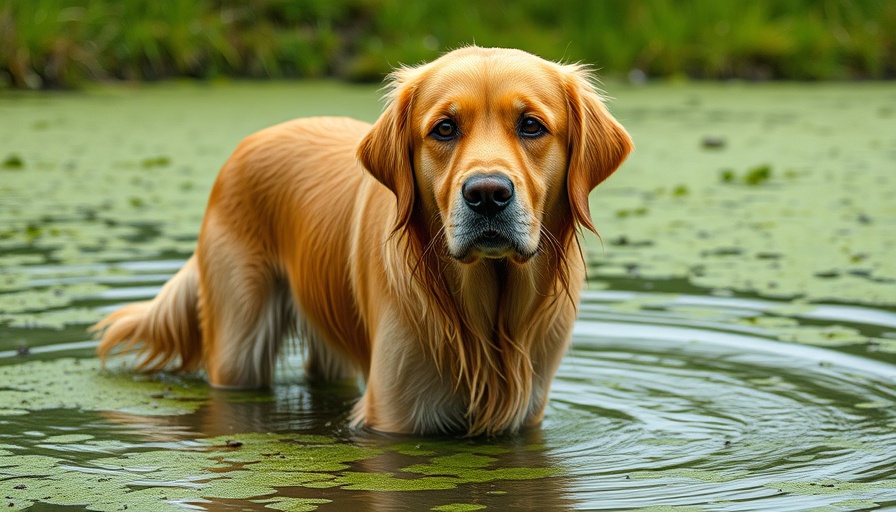
Understanding the Hidden Dangers of Blue-Green Algae
As dog parents, we want to provide our pets with the best experiences—long walks by the river, splashes in the lake, and cool swims on warm days. However, lurking beneath the surface of even the most inviting bodies of water is a hidden threat: toxic blue-green algae, also known as cyanobacteria. Despite its misleading name, blue-green algae is not actually an algae but rather a type of bacteria that thrives in stagnant, warm waters. When conditions are right, these microscopic villains can multiply rapidly, creating harmful blooms.
What makes blue-green algae particularly concerning is that it can be difficult to identify. Sometimes, the water looks clear or minimally affected, but toxins can still be present, making every algal bloom a potential danger. These toxins pose a significant health risk to dogs, as they unknowingly consume contaminated water while playing, lick it off their fur, and frolic in murky waters without hesitation.
Why Dogs Are More Vulnerable
Dogs are often more susceptible to the dangers of blue-green algae than humans. Their instinct to explore and play leads them straight into harm's way. Unlike their human companions, who may instinctively avoid murky water, dogs see it as an invitation to splash and drink. This behavior means they frequently ingest contaminated water—a single sip can lead to severe health complications.
The symptoms of blue-green algae poisoning manifest rather quickly, making it critical for dog owners to be vigilant. Signs to watch for include vomiting, diarrhea, excessive drooling, weakness, seizures, and jaundice. Unfortunately, there is no antidote for this poison, and timely treatment options often focus on stabilizing the dog's health while managing the symptoms. The survival rates can be low once symptoms appear, emphasizing the importance of prevention over cure.
The Role of Prevention
Given the severity of toxic algae, prevention becomes paramount in safeguarding your pet's health. You can take several proactive steps to protect your furry companions:
- Avoid Stagnant Water: Give your dog access to natural water bodies only after checking local advisories for algal blooms.
- Carry Fresh Water: Ensure your pet stays hydrated with safe drinking water while on outdoor adventures.
- Rinse Off After Swimming: After a swim, rinse your dog off with fresh water to remove any potential toxins stuck to their fur and paws.
- Report Suspicious Blooms: If you notice any unusual changes in your local water bodies, let authorities know so that warnings can be posted.
When in doubt, it's safer to keep your dog out of the water. Understanding these measures not only keeps your pet safe but also contributes to a healthier community around local water sources.
Community Engagement: Share the Knowledge
As pet owners, we’re part of a larger community that shares the responsibility of ensuring the safety of our canine companions. Being proactive and sharing knowledge about the dangers of blue-green algae with other dog owners can create a ripple effect of awareness that could save lives. Tell your friends and neighbors about the risks and mitigation strategies, fostering a culture of vigilance among dog owners in your area.
Final Thoughts: Taking Action for Pet Safety
Keeping our pets safe from toxic blue-green algae is a journey that begins with awareness and prevention. Our dogs rely on us to look out for their well-being as they frolic through their day-to-day adventures. By staying informed and proactive, we can better protect our pets from this unseen danger. Stay alert, share the knowledge, and most importantly, enjoy your time with your pets safely.
 Add Row
Add Row  Add
Add 




Write A Comment